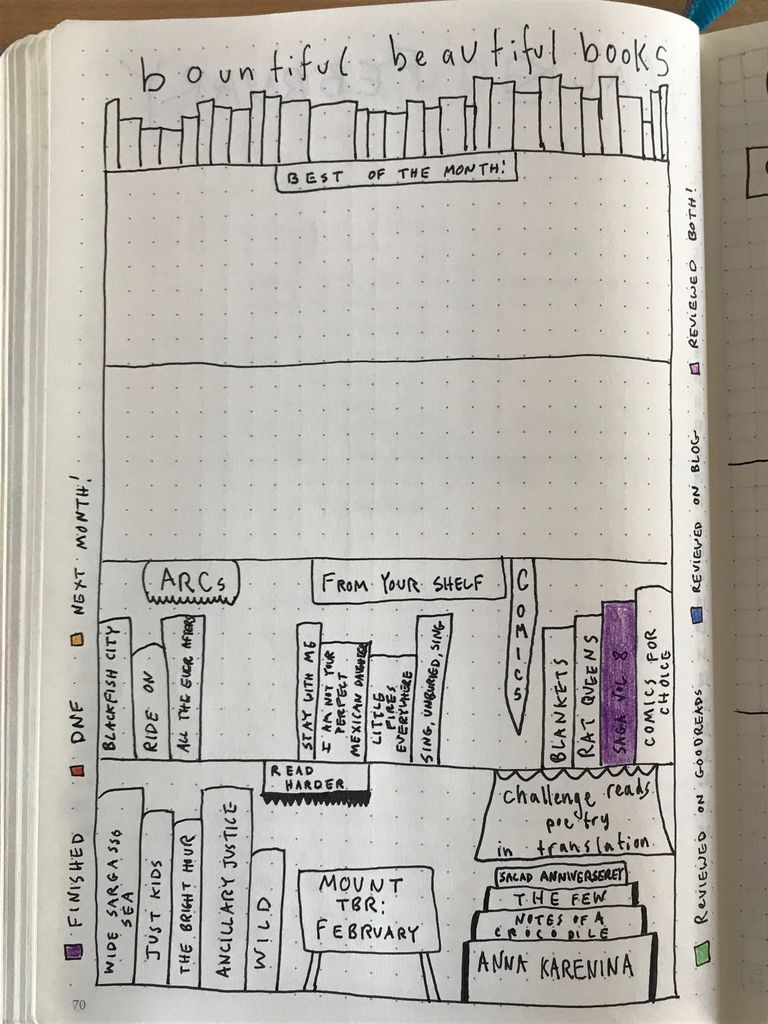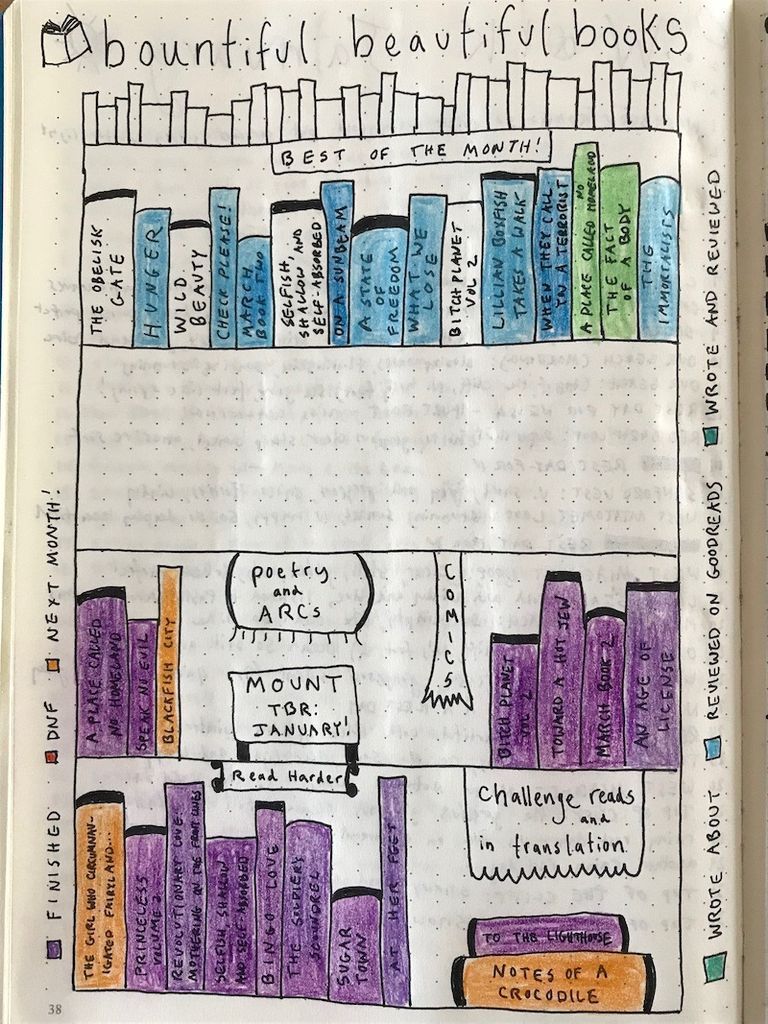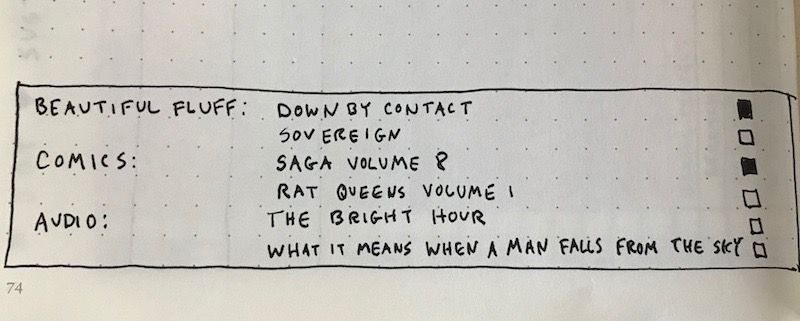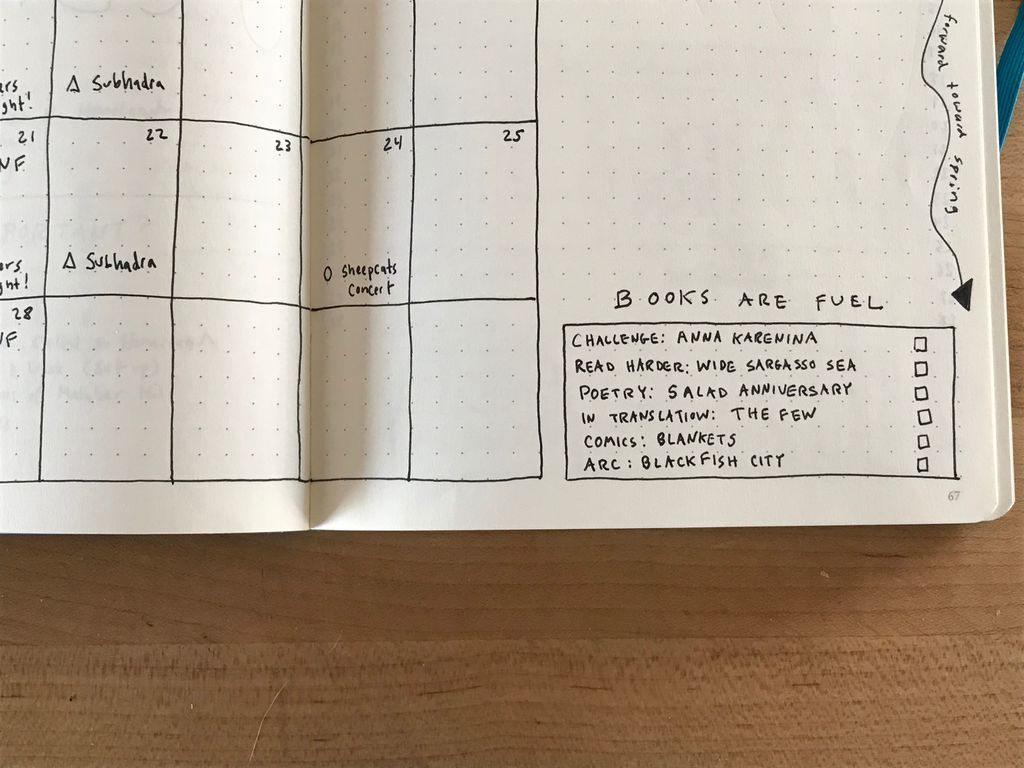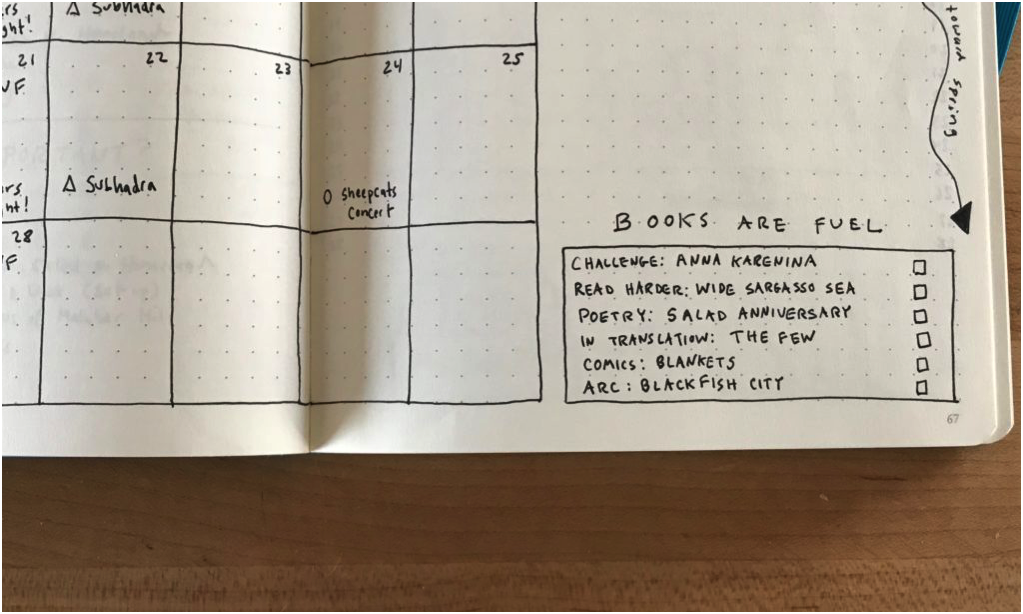
3 Bullet Journal Book Spreads that Have Improved My Reading Life
I am fairly new to bullet journaling, the combo to-do list/calendar journaling system that many folks (including me) who still enjoy using paper and pen have fallen in love with. I could go on at length about all the ways bullet journaling has improved my life, but what I love most about it are the many bullet journal book spreads that help me track and organize my reading.
The fun thing about bullet journaling is that, once you learn the system, you can adapt it however you want to suit your own needs. Inspired by the many great ideas for bullet journal book spreads on the internet, I came up with my own system that helps enrich and organize my reading life in many different ways.
Here are the three book spreads I’m currently using.
1. The Monthly Book Spread
Each month, I set aside a full page in my bullet journal for my monthly TBR. I am not an artist, but this design is so simple—it’s just straight lines, and it looks pretty! I’ve never had a monthly TBR before—I like to pick books off my various TBR lists based on what I feel like reading. But this year, in the interest of reading widely across genre, language, and format, there are a couple categories of books I want to make sure I’m reading each month. This spread helps me organize those categories.
Here’s what the book spread looks like at the beginning of each month:
As you can see, there are a few different sections. The top shelves are for recording the best books I read that month. It’s a fun visual, and very satisfying to see that shelf fill up as the month goes on.
The bottom two shelves are for my monthly TBR. It’s divided into various categories—Read Harder, books from my shelves, books in translation, challenge reads, etc. I usually put more books on these shelves than I can read in a month (I like options!), but I enjoy referring to the spread throughout the month. I’m still picking what to read next based on what I feel like, but from a smaller pool.
Here’s an example of my monthly book spread at the end of the month:
You’ll notice there’s some exciting color coding go on here. One of my goals this year is write more about books. I’m trying to review every book I read, either on Goodreads or on my blog—even if it’s just a few sentences.
I track all my reading in a spreadsheet (this one!), but I’ve discovered that my bullet journal is a much better place to track reviews. On my “Best of the Month” shelf, there’s a color for books I’ve reviewed on my blog, on Goodreads, or both. It’s satisfying to color in those books as I write reviews, and it’s also an easy visual to track. One glance tells me how I’m doing, review-wise.
For the TBR section, I have a simple color coding system for “finished,” “DNF” and “will get to next month.” Again, it’s a satisfying visual system, and as the month progress, I can easily check my progress.
2. THE WEEKLY book tracker
While I use my monthly book spread to set reading goals and track my progress, I’ve also come up with a weekly book module that’s about self-control and life balance. This is a little tracker that’s part of my weekly spread in my bullet journal, where I also keep that week’s calendar and to-do list. Here’s what it looks like:
Two years ago, I fell hard for audiobooks. I still can’t get enough of them, and always have one going. But listening to audiobooks all the time means I don’t listen to music, or podcasts, or baseball games in the summer, all of which I love. I’ve encountered a similar problem reading comics and what I like to call beautiful fluff—light, fun books that I can read when my brain is too tired for anything else. Sometimes it’s hard to tear myself away from them and I end up not reading anything else for weeks on end.
Now, there is absolutely nothing wrong with that, as long as those are the books that make you happy. But variety in my reading is what brings me the most joy. If I’m only reading one kind of book, I’m not happy.
My weekly book tracker is basically a self control check-in. Each week I pick (up to) two books of beautiful fluff, two comics, and two audiobooks. This does not mean that I read all those books in week. As you can see from the photos, I often don’t. The point is, once those little boxes are filled in, it’s time to read (or listen to) something else. It’s a signal to my brain that if it’s Wednesday and I’ve already devoured two delightful romance novels, it might be nice to spend the rest of the week reading something different.
3. the monthly TBR book tracker
This one is super simple. It’s just a little tracker box on my monthly spread (the pages with my monthly calendar). I pick one book to include from each of the categories on my monthly TBR, usually the one I’m most excited about reading.
This one serves the same function as my monthly book spread, but it’s a nice way to prioritize the books I want to make sure I read. It’s also an easy one to add to your calendar or bullet journal, especially if you don’t want to make a whole separate page for your reading each month.
Looking for more ideas for bullet journal book spreads? Check out this list of cool bullet journal ideas for books.
Do you use a bullet journal to track or organize you reading? Drop your own ideas in the comments.



